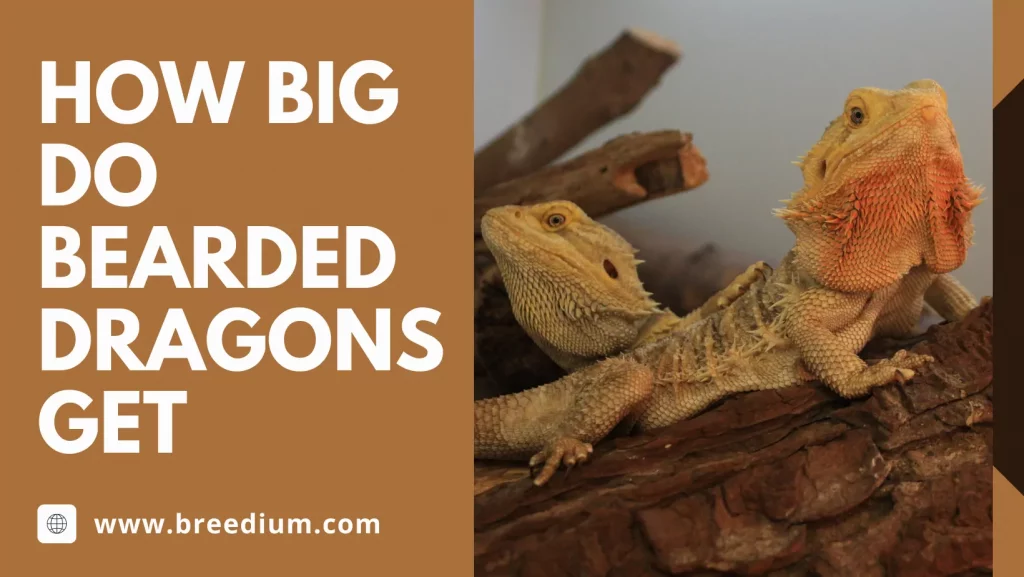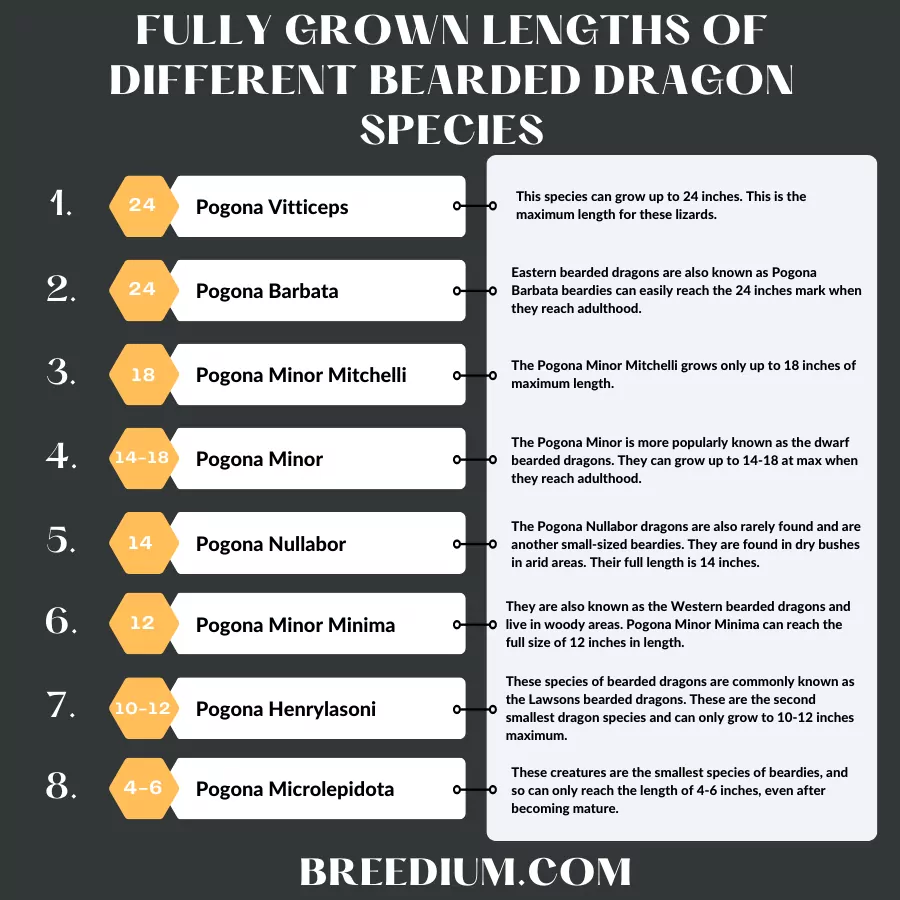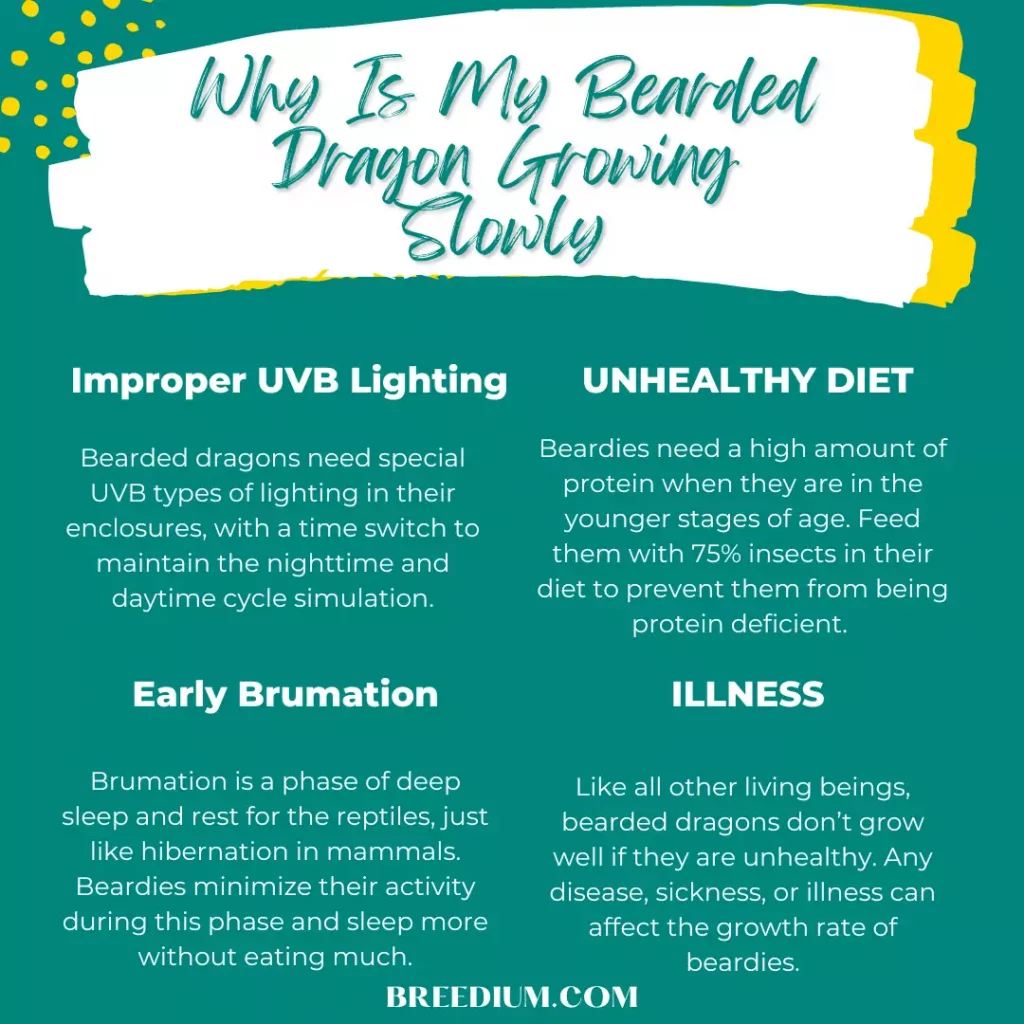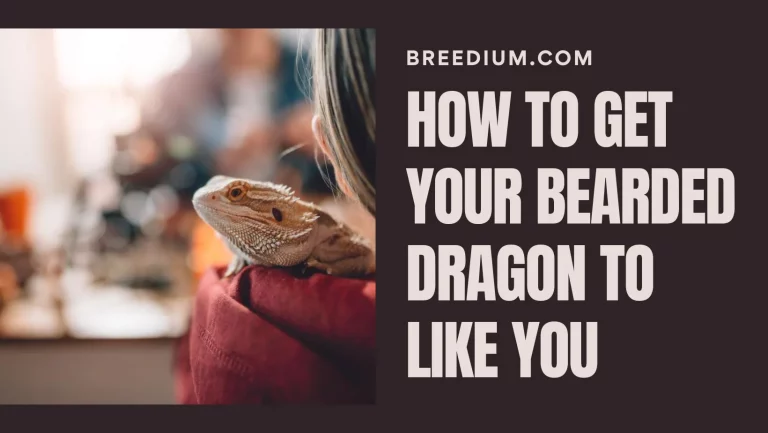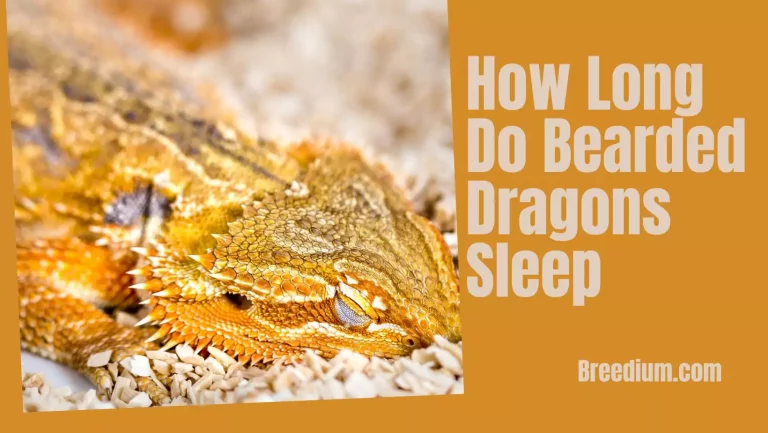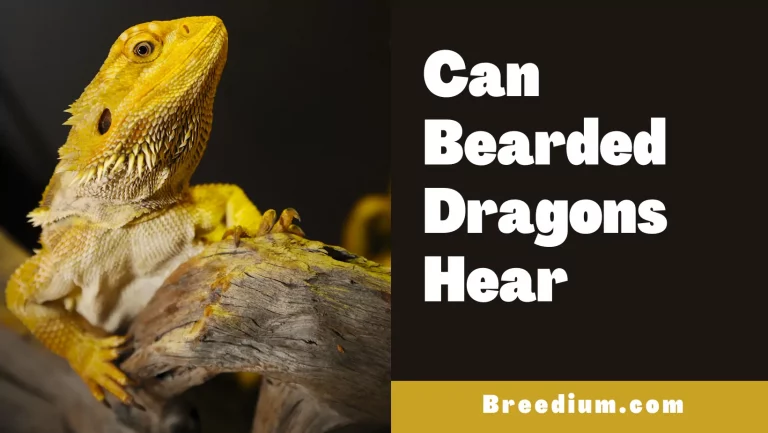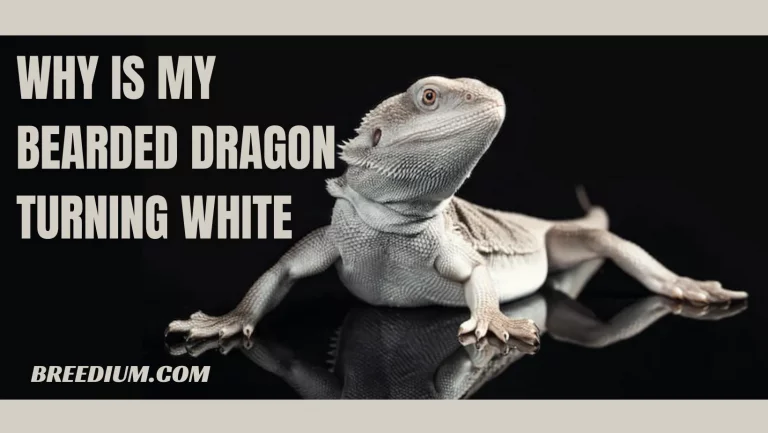How Big Do Bearded Dragons Get? | Growth And Size Chart 2024
Beardies aren’t regular domestic pets. They are exotic and unique. If you are planning to get one gentle, docile, and easy-to-handle pet, then yes a bearded dragon would make a great choice, however, do your research before you get into this. Many beginner dragon owners have no idea about how big do bearded dragons get.
Knowing about the growth of your pet dragon is the basic knowledge you must have. Let us enlighten you with this. Knowing how big your beardie can get will help you in making a lot of decisions, like feeding meals, getting the right enclosure size, and if you or your family members can handle a pet of that size.
Size Of Fully Grown Bearded Dragons
Beardies grow in length rapidly during the early stages of their life, especially during the first three months after birth. Afterward, you will see them growing about 1 or 2 inches per month. The growth remains steady until they reach adulthood which is one year old and beyond, in which they grow only 1 or 2 inches in the whole year.
A fully grown bearded dragon can be 12-24 inches long including the length of the tail. The length also depends upon a few factors. On average, bearded dragons are fully grown when they are 11-12 months old. Whereas, some become fully mature when they are 18 months old, and some reach their maximum length only at 8-10 months of age. There are a number of factors that determine the length and growth rate of a beardie. Also, find out How Quickly Do Bearded Dragons Grow.
Bearded Dragon Size Chart
If you want to know how big your bearded dragon should be at a certain age, we can tell you the average age and length roughly so that you can have an idea.
| Age | Length |
| New Born-1 Months Old | 3-4 Inches |
| 2 Months Old | 5-9 Inches |
| 3 Months Old | 8-11 Inches |
| 4 Months Old | 9-12 Inches |
| 5 Months Old | 11-16 Inches |
| 6 Months Old | 11-18 Inches |
| 8 Months Old | 13-20 Inches |
| 12 Months Old | 15-24 Inches |
These are average bearded dragon lengths measured from the head to the tip of the tail.
Fully Grown Lengths Of Different Bearded Dragon Species
To know more accurately, how big do bearded dragons get, you must know the species of your dragon. The different genetic makeup of the species also plays a major role in determining the maximum length and growth rate of bearded dragons.
Pogona Vitticeps
Pogona Vitticeps are the most popular and common species of bearded dragons. These gentle creatures are also known as the central bearded dragons and are found in dry areas like deserts, dry bushes, and arid or semi-arid forests in central and eastern Australia. This species can grow up to 24 inches. This is the maximum length for these lizards, so central bearded dragons may be your best choice if you want a full-size beardie in your enclosure.
Pogona Barbata
Eastern bearded dragons also known as Pogona Barbata are another species that can grow to the maximum size like the Pogona Vitticeps. Healthy eastern beardies can easily reach the 24 inches mark when they reach adulthood. Another name for this species is coastal bearded dragons, you will find these active lizards in the wooden areas of Eastern parts of Australia. They are popular for climbing and exploring their environment energetically.
Pogona Minor Mitchelli
You might not get this species easily as these species are very rare and only found in semi-tropical wooden areas or desert areas of Australia. The Pogona Minor Mitchelli grows only up to 18 inches in maximum length.
Pogona Minor
Here we have another rare species. The Pogona Minor is more popularly known as the dwarf bearded dragons. And as the name tells you they do not extend much in size. They can grow up to 14-18 at max when they reach adulthood. These species are seen in the interior of Western Australia and the Southwest coast of Australia.
Pogona Nullabor
The Pogona Nullabor dragons are also rarely found and are other small-sized beardies. They are found in dry bushes in arid areas. Their full length is 14 inches.
Pogona Minor Minima
These are very small bearded dragon species and you will rarely see them. These unique lizards are not commonly found. They are also known as the Western bearded dragons and live in woody areas. Pogona Minor Minima can reach the full size of 12 inches in length.
Pogona Henrylasoni
These species of bearded dragons are commonly known as the Lawsons bearded dragons. These are the second smallest dragon species and can only grow to 10-12 inches maximum.
Pogona Microlepidota
These unique species are also known as the Drysdale River Bearded Dragons. They are one of the rarest bearded dragon kinds. These creatures are the smallest species of beardies, and so can only reach the length of 4-6 inches, even after becoming mature. However, these species are so rare that not many caretakers can own them.
Why Is My Bearded Dragon Growing Slowly
Many times, dragon owners complain that their bearded dragon is not growing, or growing at a very slow rate. There are a few factors that can cause a hindrance in the growth rate of bearded dragons. However, these can easily be avoided with proper care.
Improper UVB Lighting
Bearded dragons need special UVB types of lighting in their enclosures, with a time switch to maintain the nighttime and daytime cycle simulation. The UVB light bulbs provide an ample amount of light with the correct intensity for basking to the beardies. The light intensity is very important for the health and growth of dragons. Their bones also need UVB light to prevent health diseases, weak bones, and MBD. This is because light helps the beardies to absorb calcium from their diet.
Improper lighting in the enclosure causes slow growth, stunted growth, loss of appetite, and laziness in beardies. Therefore, make sure the enclosure or tank is illuminated with proper lighting. Also, make sure you have an automatic time switch to have a smooth day and night cycle for the beardie. Change the UVB bulb without any delay if you need to. It is best to replace the bulbs with new ones after 6 months.
Unhealthy Diet
Beardies need a high amount of protein when they are in the younger stages of age. Feed them 75% of insects in their diet to prevent them from being protein deficient. The diet during the first three months should be rich in protein and calcium. You should feed the baby dragon three times a day to ensure rapid growth.
If you plan the meal carefully in the initial months of the bearded dragon, your beardie will pick up a fast rate of growth. As the beardie grows older, you should decrease the amount of protein-rich insects and increase the number of vegetables and fruits. However, you should always feed calcium-rich vegetables.
Early Brumation
Bearded Dragon Brumation is a phase of deep sleep and rest for reptiles, just like hibernation in mammals. Beardies minimize their activity during this phase and sleep more without eating much. Brumation is normal in mature bearded dragons and is a sign of good health. However, baby bearded dragons should not go into brumation as this is their period of rapid growth. They eat the most in this period to increase their size. If your dragon is going into brumation earlier, then you must contact your vet and make a plan to rectify your beardie’s behavior.
Illness
Like all other living beings, bearded dragons don’t grow well if they are unhealthy. Any disease, sickness, or illness can affect the growth rate of beardies. Try your best to keep your beardie fit and healthy. Feed healthy meals, clean its enclosure, and provide them with enough light and space in the enclosure.
Does Gender Affect Their Size
Yes, just like all the other animals, gender does affect the size of the bearded dragon in every species. The male beardies are generally longer in length. While females have a shorter head-to-tail length, although their bodies are wider, and their tails are slimmer. The male bearded dragons have larger heads and so helps the caretakers to distinguish between the male and female bearded dragons. Also, read about Bearded Dragon Tail Rot.
Conclusion
How big do bearded dragons get? On average, bearded dragons’ full length can range from 12 to 24 inches. The size of the bearded dragons is measured from head to tail, and this can differ in different species and genders Pogona. Feed your young beardie with protein-rich insects to ensure a good growth rate. Also, make sure the UVB light source is enough and changed after every 6 months. Take good care of your dragon when it’s a baby to have the full length of your beardie when it gets mature, as the rapid growth phase is during the earlier stages of a beardie’s life.
Frequently Asked Questions
How big is a 1-year-old bearded dragon?
A one-year-old beardie is 15 to 18 inches long on average, considering the popular pet bearded dragons owned by the majority.
How long do bearded dragons live?
Bearded dragons are very friendly lizards and are often owned by owners due to their large lifespan. These creatures live up to 10 to 15 years easily in a healthy and closed captivity.
How can I help my bearded dragon grow?
There are a number of things that you can do to increase your beardie’s length. You can provide him with an ample amount of UVB light, check the temperature is warm enough, provide a spacious enclosure, and most importantly feed it with a high-protein and calcium diet. There are many insects that are very high in protein and many vegetables that can add to the calcium content.

Emma is a pet enthusiast, and her way with words makes her an expressive writer. Her interests lie in healthcare and planning nutrition for various pets. She has two girls, and she’s passing her passion to them through occasional volunteer projects in the small neighborhood zoo. Emma joined our team as an enthusiast and has added more years to her experience by researching more about various creatures!

